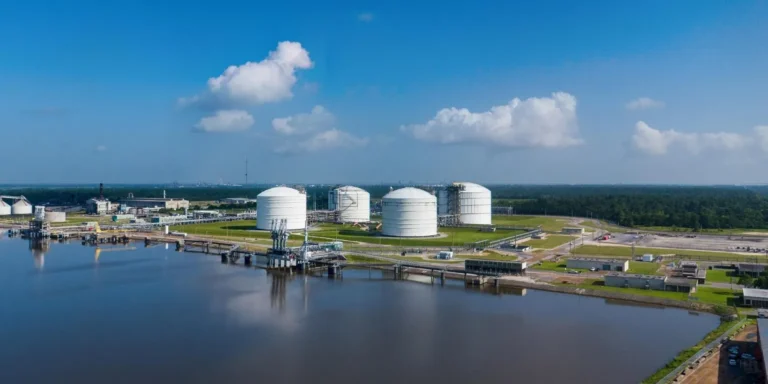
Tallgrass Advances Permian Natural Gas Pipeline with Anchor Shipper Agreements and Vision for U.S. Energy Infrastructure Expansion
Tallgrass, a leading energy infrastructure company, has announced a major milestone in its plans to construct a new natural gas pipeline designed to connect production areas in the Permian Basin to the Rockies Express Pipeline (REX) and a network of other delivery points across the United States. The company revealed that it has successfully executed precedent agreements with anchor shippers—long-term, high-volume customers—which establish firm transportation commitments. These agreements provide the financial foundation necessary to advance the project into the construction and regulatory phases.
The proposed pipeline is designed to provide a significant new route for the movement of natural gas from the prolific Permian Basin, one of the most active and productive oil and gas regions in the world. By connecting this key supply region to a broad network of downstream markets, Tallgrass aims to enhance the reliability, efficiency, and reach of the U.S. natural gas transportation system. The project’s target in-service date is late 2028, contingent upon the completion of customary regulatory approvals and internal corporate reviews.
Anchor Shippers Secure Economic Viability of Pipeline Project
The execution of precedent agreements with anchor shippers is a critical first step in the realization of any large-scale pipeline infrastructure project. These agreements effectively signal a long-term commitment from significant natural gas producers or marketers who have pledged to transport a specific volume of gas on the pipeline over a defined period. The economic security provided by these agreements underpins the financial rationale for the construction of the pipeline, helping to attract investors and facilitate project planning, permitting, and execution.
Tallgrass confirmed that the level of firm transportation commitments made by these initial shippers is already sufficient to justify the construction of the pipeline. This not only demonstrates strong market demand but also signals confidence in the future need for enhanced midstream capacity from the Permian region.

Open Season to Broaden Market Access
In addition to the anchor shipper agreements already in place, Tallgrass plans to conduct an open season in the near future. This is a standard process in the pipeline industry that allows other interested parties—typically natural gas producers, utilities, or marketers—to bid for remaining transportation capacity on the line. The open season offers a transparent and competitive method for allocating firm service and optimizing pipeline utilization.
The final size and capacity of the pipeline will ultimately be determined based on the level of market interest generated during the open season. At present, Tallgrass anticipates that the pipeline could be capable of transporting up to 2.4 billion cubic feet (Bcf) of natural gas per day, depending on the volume of commitments received. This scale of transport capability would position the new pipeline as a critical component of the broader U.S. natural gas infrastructure system, helping to ease regional bottlenecks and meet growing national and international demand.
Strategic National Importance
What makes the proposed pipeline project particularly noteworthy is its strategic significance to the U.S. energy market. Natural gas continues to play an essential role in the country’s energy mix, serving as a key fuel for electricity generation, industrial processing, residential heating, and a range of commercial applications. The ability to move large volumes of natural gas efficiently and affordably from supply regions like the Permian Basin to demand centers across the U.S. is critical to maintaining energy reliability and affordability.
According to Tallgrass, this pipeline will serve multiple major markets that are not only significant in terms of energy consumption but are also vital hubs of innovation and economic growth. These include areas with high concentrations of industrial and agricultural activity, as well as regions experiencing rapid technological development. For example, the growth of artificial intelligence and data centers, which require significant energy inputs, is fueling increased demand for reliable and low-carbon electricity—much of which is currently supplied by natural-gas-fired power plants.
Similarly, national policies focused on domestic manufacturing (reshoring) and agricultural productivity are increasing the need for stable and affordable energy sources. Tallgrass’ pipeline is designed to support these priorities by enabling a dependable flow of natural gas to regions where it can be put to immediate productive use.
Integration with Tallgrass’ Decarbonization Network
One of the most innovative aspects of the pipeline project is its planned integration with Tallgrass’ existing and emerging decarbonization infrastructure. The company has developed approximately 800 miles of pipeline assets dedicated to supporting low-carbon and renewable energy solutions, including carbon capture and storage (CCS) and clean hydrogen transport.
Once operational, the new Permian-to-REX pipeline will provide a direct conduit for natural gas into this decarbonization network. This will allow power producers and industrial users—especially those investing in new natural-gas-fired generation—to pair their operations with carbon capture and other emissions mitigation strategies from the outset. The result is a more sustainable, forward-looking natural gas system that aligns with long-term environmental goals without sacrificing reliability or affordability.
By enabling carbon management at scale, the pipeline will also open new opportunities for industrial decarbonization, especially in the Midwest and Great Plains regions where heavy manufacturing and energy-intensive industries are major economic drivers. Hydrogen-ready infrastructure will further enhance the pipeline’s future utility, giving customers the option to adapt to evolving fuel blends or shift to low-emission alternatives as technologies and policies mature.
Resilient Infrastructure for Economic and Environmental Benefits
Beyond the immediate commercial and operational advantages, Tallgrass emphasizes that the project will serve as a foundational investment in America’s energy future. By creating a flexible, reliable, and resilient transportation corridor for low-cost domestic natural gas, the company aims to bolster local economies, enhance energy security, and promote environmental sustainability.
The new pipeline is intended to work in concert with other energy technologies, including renewables like wind and solar. While intermittent in nature, these renewable sources can benefit from the flexible and dispatchable support provided by natural gas generation. The combined effect is a more stable power grid that supports both environmental targets and economic productivity.
Tallgrass envisions that the project will have a broad and lasting impact on communities across the Rockies, Midwest, and Great Plains. By enhancing access to affordable and reliable energy, the pipeline will help support job creation, community development, and industrial growth. Moreover, the company’s focus on integrating decarbonization solutions from the beginning ensures that this infrastructure will remain relevant and aligned with future environmental and regulatory expectations.
As Tallgrass prepares to launch the open season process and begin the regulatory journey toward construction, the company remains focused on collaboration with stakeholders, including landowners, regulators, and local communities. Public engagement and environmental stewardship will be key priorities as the project advances.
If successfully completed, the new Permian-to-REX pipeline will not only represent a major achievement in energy infrastructure development but will also serve as a model for how traditional energy projects can evolve to meet modern economic and environmental challenges. Through a combination of strategic foresight, commercial discipline, and technological integration, Tallgrass is positioning itself—and the U.S. natural gas sector—for a future that is both prosperous and sustainable.







